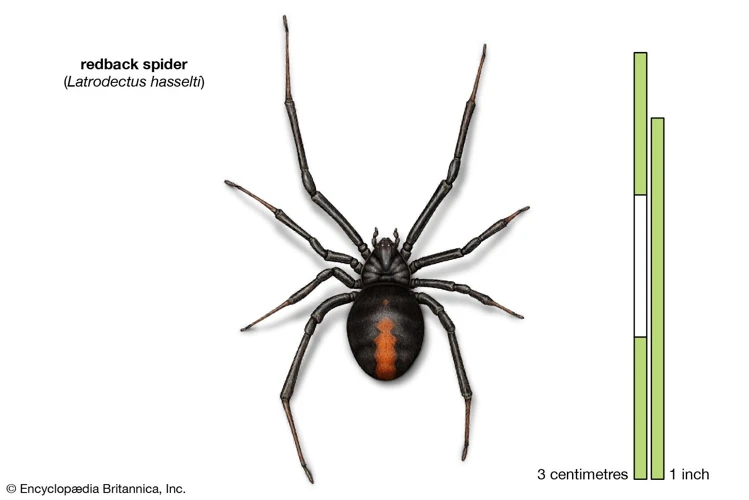As we delve into the world of arachnids, the Black Widow Spider stands out with its distinctive black body and iconic red hourglass marking. But beyond its striking appearance lies a fascinating reproductive system, unique behaviors, and important survival strategies. In this article, we will explore the intricate anatomy of female and male Black Widow Spiders, their mating habits, the development of their spiderlings, and how to survive a potential bite. This guide will provide a detailed insight into the world of Black Widows, including some little-known facts and tips to help you stay safe.
Anatomy of Female Black Widow Spiders
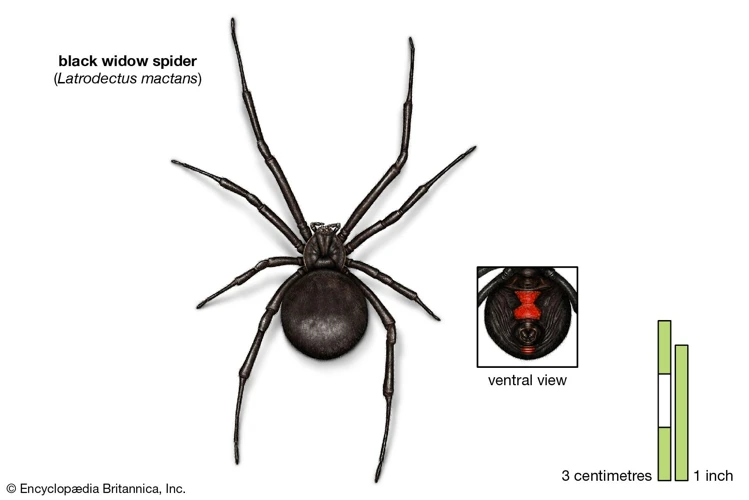
The anatomy of female Black Widow Spiders is a fascinating subject, full of intricate structures and adaptations that enable reproduction, survival, and proliferation. These spiders are infamous for their venomous bites and predatory nature, but there is much more to learn about their reproductive biology. From the spinnerets in their abdomen to the spermathecae that store sperm, female Black Widow Spiders have evolved unique features that make them formidable predators and successful breeders. In this section, we will explore the anatomy of female Black Widow Spiders in detail, uncovering the secrets of their reproductive system. Make sure to read until the end to discover interesting facts about their mating rituals and behaviors, as well as the risks involved for males.
Abdomen and Spinnerets
The abdomen and spinnerets play a vital role in the reproductive system of the female Black Widow spider. The female Black Widow has a bulbous abdomen which is the location of her reproductive organs. Inside the abdomen, there are two spermathecae, sac-like structures, where the female stores sperm from the male during copulation. During reproduction, the male actively deposits his sperm into the female’s spermathecae, where it is stored until needed for fertilization.
Additionally, the spinnerets are small, finger-like appendages located at the end of the abdomen. These structures are responsible for producing webbing, which the female Black Widow spider uses to construct her egg sacs. The quality and composition of the silk produced by these spider spinnerets is unique and has been studied for numerous advancements to improve technology.
It is interesting to note that female Black Widows also use pheromones to attract male suitors during mating season. The pheromones released by the female are potent and can travel great distances to attract males of the species. This behavior was first observed by scientists when studying the frequency of Black Widow mating in their natural habitat. Male Black Widows have also developed unique strategies for accessing the female during mating, such as the development of mating plugs to prevent other males from impregnating the female.
It is also worth mentioning the post-mating behaviors of female Black Widows. After successfully mating, the female may cannibalize the male’s body for nutrients, as well as to reduce competition for resources. This behavior has led to interesting debates among researchers about the benefits of male self-sacrifice compared to survival in Black Widow mating strategies.
It is vital to understand the anatomy of the female Black Widow spider’s reproductive system as it is the key to the continuation of the species. Understanding the complex behavior and strategies employed by both the male and female Black Widows during breeding is intriguing and remains an area of intense research by scientists and entomologists worldwide.
Spermathecae
The spermathecae, which are located in the female black widow spider’s abdomen, are the organs that store the sperm after mating occurs. These small sacs are where the female spiders keep the male’s sperm until she is ready to fertilize her eggs. The spermathecae are in two pairs and located on each side of the abdomen. They have a duct that connects to the oviducts, which release eggs into the female’s reproductive system.
Once the male black widow spider deposits his sperm into the female’s genital opening, the sperm travel up through the spermathecal ducts and into the spermathecae. The purpose of the spermathecae is to ensure that the female can fertilize all of her eggs at once, at a time when she determines to be ideal.
Interestingly, female black widow spiders have the ability to store sperm for up to five months or more after mating, leading to multiple egg sacs being produced from a single mating encounter. During this time, the female spider may have multiple partners, allowing for genetic diversity to occur in the offspring.
It is quite fascinating to note that the spermathecae play a vital role in the reproductive cycle of the female black widow spider, allowing her to produce healthy young even months after mating. This unique aspect of black widow spider mating reinforces the importance of considering the entire anatomy and reproductive system of these fascinating arachnids.
Mating Habits of Black Widow Spiders
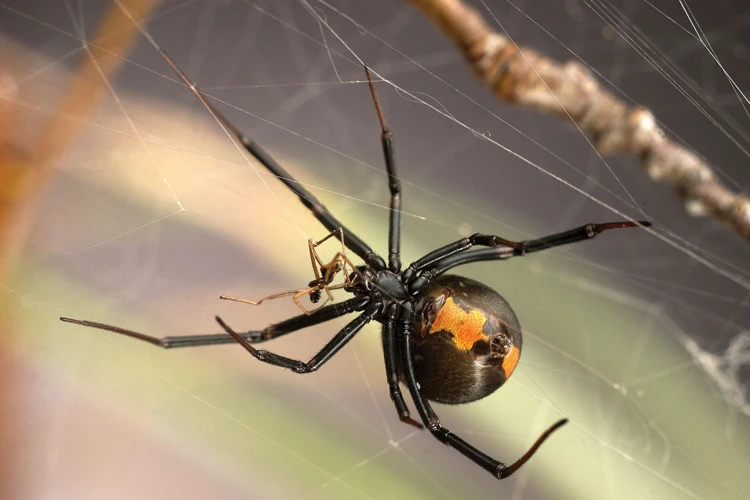
The mysterious and complex mating habits of black widow spiders have long been a subject of interest and fascination for many researchers and nature enthusiasts alike. These spiders, known for their deadly venom and striking appearance, engage in a variety of behaviors and rituals during the mating process that are both intriguing and sometimes downright shocking. From the use of pheromones to cannibalism, each step of the black widow’s reproductive system is a unique and fascinating process. In this section, we will delve deeper into the intricacies of black widow spider mating, exploring topics such as rituals and mating strategies, as well as post-mating behaviors and risks associated with reproduction.
Mating Rituals
During the mating rituals of black widow spiders, the male spider approaches the female spider cautiously as it is aware of the cannibalistic nature of the female spider. The male spider tries to avoid becoming the meal of the female spider by first plucking the web of the female spider to produce unique vibrations that attract the female spider. When the female spider is receptive to the male’s approach, the male spider takes his place on her abdomen and crawls towards her epigynum to deposit sperm into her spermathecae.
The mating process is intense and dangerous as the male spider risks being eaten by the female spider. Male black widow spiders use different strategies to avoid female predation. Nevertheless, these strategies do not guarantee the safety of the male spider. The duration of the mating process can also vary, with some males completing the copulation process in less than an hour, while others extend it for days. To avoid being attacked by the female, some males might have to stay longer with the female spider, hence prolonging the mating process.
The frequency of black widow mating depends on different factors like the availability of prey and the habitat type. The mating period usually occurs in summer, and it might happen more than once a season. Interestingly, female black widow spiders have been known to eat their male partners after copulation, despite the fact that they need the sperm to reproduce. It was once believed that males assisted in the process of reducing the chances of their partners eating them by inserting mating sclerites into the female’s genital opening, resulting in a mating plug. However, recent studies have shown that the plug does not improve the success rate of male fertilization in black widow spiders.
Overall, mating rituals in black widow spiders are complex and risky, with the male spiders facing numerous challenges to reproduce with the female spiders. While the process might be shorter in duration, it is typically intense and filled with challenges. Male spiders need to be well prepared for any eventuality before taking this risky step.
Post-Mating Behaviors
After mating, female black widow spiders are known for exhibiting a range of interesting behaviors. First, they often eat the male they just mated with, which is why they are called “black widows.” This phenomenon is called cannibalism, and it has several potential benefits for the female. By consuming the male, the female gains a nutritious meal that can help support the energy-intensive process of producing and laying eggs. Additionally, by getting rid of the male, the female ensures that no other male can fertilize her eggs, which helps ensure that she passes on her genes to her offspring.
Another post-mating behavior of female black widows is the production of a mating plug. This is a secretion that the female releases into her reproductive tract after mating. The plug can help prevent other males from mating with the female, which increases the odds that her offspring will be fathered by the male she just mated with. The plug can also serve to protect the female from infection by sealing off her reproductive tract.
While post-mating behaviors in female black widows are well known, male black widow spiders also exhibit interesting behaviors after mating. One behavior is something called “embolic consumption.” This is the process by which the male breaks off one of his pedipalps, which contains a structure called an “embolus.” The embolus is transferred to the female during mating, and by breaking it off, the male creates a plug that can help prevent other males from inseminating the female. However, the male also loses one of his pedipalps, which can limit his ability to mate in the future. This behavior is one reason why male black widows are known for their short lifespans.
Post-mating behaviors in black widows are complex and fascinating. They reveal a great deal about the reproductive strategies of these spiders and how they have evolved to maximize their reproductive success. To learn more about the mating habits of black widow spiders and how they live in their natural habitat, visit our article on black widow habitat and mating.
Anatomy of Male Black Widow Spiders
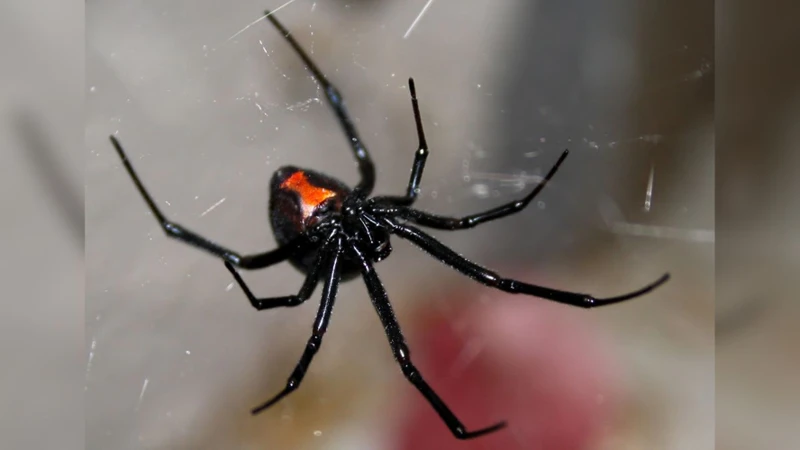
As we continue to explore the intricacies of black widow spider anatomy, we cannot overlook the male counterpart. Despite their reputation as hapless victims of their female mates, male black widow spiders are actually fascinating creatures in their own right. Their anatomy, while similar to that of their female counterparts, has distinct differences that allow them to engage in successful mating behaviors. Let’s delve into the unique features of male black widow spider anatomy and their role in the spider’s reproductive process. But before we do, let’s take a moment to appreciate the precarious nature of mating for these spiders – a topic we previously explored in our article on female black widow spider cannibalism and mating duration.
Pedipalps
Male black widow spiders also have interesting reproductive anatomy. One of the most notable features is their pedipalps. These are the two leg-like appendages located near their mouthparts. The pedipalps play a crucial role in the mating process, as they are used to transfer sperm to the female during copulation.
The pedipalps of male black widows are unique in shape and size. They are elongated and have a bulbous tip that contains the sperm. This structure is called an embolus. During mating, the male inserts his embolus into the female’s spermathecae, where the sperm is stored. The transfer is not always successful, as the female may attack and eat the male before the process is complete.
The hemispermatophores also play an essential role in the black widow spider’s reproductive system. These are small packets of sperm that are created by the male’s reproductive glands. They are stored in the pedipalps and are used to transfer sperm to the female. Male spiders can make multiple hemispermatophores, which means that they can mate with more than one female.
The pedipalps, emboli, and hemispermatophores are essential components of the black widow spider’s mating process. They allow the male to transfer sperm to the female and increase the chances of fertilization. However, the process is not without risks, as the male may fall victim to cannibalism if the female decides to attack.
To learn more about the mating habits of black widow spiders, check out our article on male black widow spider mating.
Emboli and Hemispermatophores
Male black widow spiders have evolved special structures known as emboli, which are vital for successful mating. The emboli are two modified appendages, called pedipalps, found on the spider’s head. These structures transfer the sperm from the male to the female during mating.
The emboli of the male black widow spider contain hemispermatophores, which are half packets of sperm. In other words, the sperm from the male is divided into two packets, each containing half of the total amount of sperm. When the males mate with females, they transfer one hemispermatophore to each spermathecae in the female’s abdomen.
Interestingly, the emboli are specifically designed to be inserted into the spermathecae of female black widow spiders. They have a unique shape and structure that enable them to overcome any defensive mechanisms that the female spider may have. The emboli are also lined with spines that make it difficult for the female to expel them before the transfer of sperm is complete.
The emboli and hemispermatophores play an important role in mating, as they ensure that the male’s sperm reaches the female’s eggs. Without these structures, the risk of infertility would be high, leading to a lower number of offspring per mating. Male black widow spiders, therefore, rely heavily on their emboli and hemispermatophores to ensure reproductive success.
Key takeaway: The emboli and hemispermatophores are two vital structures in male black widow spiders that enable them to mate successfully with females. These structures are specifically designed to transfer the male’s sperm to the female’s eggs, ensuring fertility and a high number of offspring per mating.
Mating Risks and Behaviors
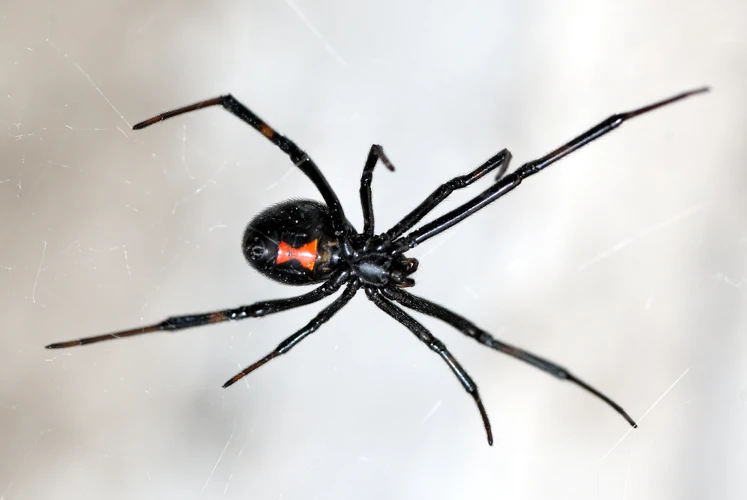
Mating for black widow spiders comes with a considerable amount of risks and complex behaviors. The journey to a successful copulation is far from straightforward and often involves unique strategies and adaptations. In this section, we will delve into the intricacies of how male and female black widows mate, the potential dangers involved, and the surprising benefits that come with certain mating behaviors. Let’s explore the fascinating world of black widow spider mating.
Cannibalism and its Benefits
During mating, male Black Widow Spiders risk being cannibalized by females. While this may seem like a negative aspect of the mating process, there are actually benefits to the practice of cannibalism.
1. Nutrient Acquisition: Cannibalism, in this case, is not about aggression, but rather about nutrition. Female Black Widows require a lot of nutrients to produce their egg sacs. By consuming the male after mating, the female is able to acquire the necessary nutrients to produce healthy offspring.
2. Increased Reproductive Success: Consuming the male also increases the female’s reproductive success. Studies have shown that female Black Widows who cannibalize their mates produce more eggs and have higher hatch rates than those who do not.
3. Competition Elimination: Cannibalism also eliminates possible competition. By consuming the male, the female ensures that no other female will mate with that male and produce offspring that could compete with her own.
4. Sexual Selection: Additionally, cannibalism may also be a form of sexual selection. Females may choose to mate with males who are larger or stronger, knowing that if they are unable to produce healthy offspring, they will be consumed.
While cannibalism may seem gruesome, it actually has several benefits for female Black Widow Spiders. It provides necessary nutrients for reproduction, increases reproductive success, eliminates competition, and may even contribute to sexual selection.
Mating Plugs and Copulation Duration
During copulation, male black widow spiders deposit a mating plug into the female’s genital opening to prevent any other males from mating with her. The plug is composed of a mixture of secretions from the male’s reproductive organs and silk produced by his spinnerets. The plug serves as a physical barrier, but it also contains chemicals that inhibit female receptivity to subsequent mating attempts.
Research has shown that copulation duration varies widely among black widow spider species, with some lasting only a few minutes and others lasting several hours. Studies have found that copulation duration may be influenced by factors such as male size, female aggression, and environmental conditions.
Table: Factors Influencing Copulation Duration in Black Widow Spiders
| Factor | Influence on Copulation Duration |
|————————————|———————————————————-|
| Male size | Larger males may copulate for longer periods of time |
| Female aggression | More aggressive females may terminate copulation early |
| Environmental conditions | Temperature and humidity can impact copulation duration |
Interestingly, research has also shown that the male black widow spider’s pedipalps, used for mating, are modified in some species to have a hook that can damage or detach from the female’s genital opening and potentially secure the mating plug. This behavior, known as “traumatic insemination,” is not always successful and can be harmful to the female.
The mating behaviors, including the use of mating plugs, and copulation duration of black widow spiders are complex processes influenced by a variety of factors. Further research is needed to fully understand these behaviors and their implications for the survival and reproduction of these fascinating creatures.
Development of Spiderlings
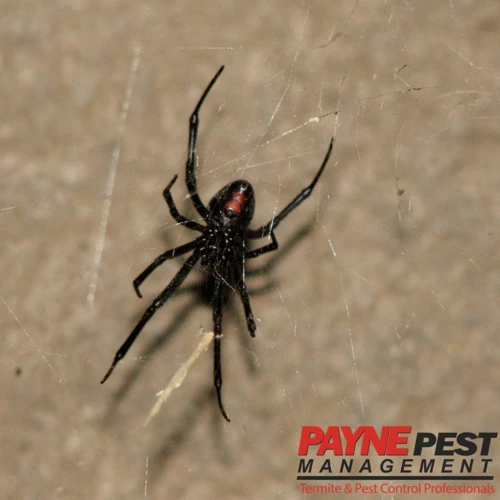
As the black widow spider’s reproductive process progresses, the focus turns to the development of the spiderlings. This is a critical stage in the survival of the black widow species, as the spiderlings must be able to fend for themselves from birth. The development of spiderlings is a fascinating process that involves meticulous care and preparation from the mother black widow spider. Let’s explore the intricate details of how black widow spiderlings are formed and what measures the mother takes to ensure their survival.
Egg Sac Production
Female black widow spiders have an incredible ability to produce a large number of eggs throughout their lifetime. After mating with a male, the female spider will begin producing eggs within her reproductive system. The eggs are then enclosed in a sac, which is formed from a combination of silk and special secretions.
The egg sac production process can vary depending on the species of black widow spider, but in general, the sac will contain anywhere from 100 to 400 eggs. This sac is carefully guarded by the female spider, who will remain with it constantly until the spiderlings have hatched.
It can take anywhere from 20 to 30 days for the spiderlings to develop inside the egg sac, at which point they will emerge and begin their lives. Female black widow spiders can produce multiple egg sacs throughout their lifespan, with some species producing as many as five or six.
The table below outlines some common facts and figures related to egg sac production in black widow spiders:
| Species | Number of Eggs per Sac | Incubation Period |
|---|---|---|
| Latrodectus hesperus | 200-300 | 20-30 days |
| Latrodectus mactans | 200-400 | 20-30 days |
| Latrodectus geometricus | 100-300 | 20-25 days |
| Latrodectus bishopi | 150-250 | 25-30 days |
It is important to note that while black widow spiders can be dangerous, they play an important role in controlling insect populations and keeping ecosystems in balance. While it is important to take precautions when dealing with black widow spiders, it is also important to appreciate the role they play in the natural world.
Lifestyle of Spiderlings
One particularly intriguing aspect of black widow spiders is the lifestyle of their spiderlings. After hatching from their egg sacs, the spiderlings must fend for themselves and navigate the treacherous world of the arachnid kingdom. Here are some key points about their lifestyle:
- Dispersal: Spiderlings disperse away from their siblings and mother after hatching, in order to reduce competition for food and resources. They must quickly establish their own territory and find prey to survive.
- Cannibalism: While spiderlings of other species are known to cannibalize each other, black widow spiderlings are commonly known to do so, especially if their food source is limited. This makes it even more crucial for each spiderling to establish its own territory and find prey.
- Growth and Development: It takes around 100 days for a black widow spiderling to reach maturity, during which time it will shed its exoskeleton several times as it grows in size. As it matures, it will begin to develop the characteristic red hourglass shape on its abdomen.
- Mating: Once mature, black widow spiderlings will mate and produce their own egg sacs, continuing the cycle of life and survival. However, only the strongest and most capable spiders will survive to reach maturity and reproduce.
- Survival Techniques: Black widow spiderlings have a variety of survival techniques they can use, including ballooning (using silk strands to catch the wind and travel long distances), hiding in crevices or under rocks, and using their small size and agility to avoid predators.
The lifestyle of black widow spiderlings is a fascinating and perilous one. These tiny creatures must learn quickly and use all their survival techniques to make it to maturity and continue the cycle of life for their species.
Surviving the Bite of Black Widow Spiders
As fascinating as black widow spiders can be, we must not forget that they are one of the most venomous spiders encountered by humans. In fact, their venom is 15 times more potent than that of a rattlesnake! It’s important to know what to do in case of a bite to ensure a quick and safe recovery. In this section, we will explore the steps you can take to survive a black widow spider bite. So, if you’re ready to learn some life-saving tips, keep reading.
Bite Symptoms and Treatment
When a black widow spider bites, it can cause various symptoms that can range from mild to severe. It is important to know these symptoms so that you can seek medical attention as soon as possible.
| Symptoms | Treatment |
|---|---|
| Pain at bite site | If the pain is not severe, you can apply a cold compress to the area to reduce swelling and pain. Over-the-counter pain medications such as ibuprofen or acetaminophen can also be taken. However, if the pain is severe, seek medical attention immediately. |
| Muscle cramps and spasms | These symptoms can be treated with muscle relaxants prescribed by a doctor. If the symptoms are severe, hospitalization may be necessary for observation and treatment. |
| Abdominal pain | Abdominal pain can be a sign of severe envenomation and requires immediate medical attention. Treatment will depend on the severity of the symptoms. |
| Nausea and vomiting | If the symptoms are mild, drinking clear fluids can help. However, if the symptoms are severe and persistent, hospitalization may be required for intravenous fluids and antiemetic medications. |
| Sweating | Staying in a cool place and drinking plenty of fluids can help with sweating. However, if the sweating is excessive or accompanied by other severe symptoms, medical attention should be sought immediately. |
It is important to remember that if you suspect you have been bitten by a black widow spider, seek medical attention immediately. The bites can be dangerous and even potentially deadly, especially to children and the elderly.
Preventing Spider Bites
It’s essential to take precautions to prevent spider bites, especially from black widow spiders. Here are some ways to stay safe:
- Wear Protective Clothing: When working in areas where black widows might reside, wear long-sleeved shirts, pants, gloves, and work boots.
- Keep Your Home Free from Clutter: Clutter, especially piles of debris or wood, can be an attractive nesting site for black widows. Keep your yard and garage clear of debris to avoid giving the spiders a place to hide.
- Shake Out Clothing and Shoes: Before putting on clothing that has been left on the floor or outdoors, check it for spiders, including shoes and gloves.
- Seal Your Home: To keep spiders from coming indoors, seal any cracks or gaps in your windows, doors, or walls.
- Use Insecticide: Apply insecticide around the perimeter of your home, and in outdoor living spaces to keep spiders and other pests at bay.
- Avoid Being Outdoors at Night: Black widows are most active at night, so it’s safer to stay indoors during the evenings.
By following these tips, you can reduce your risk of being bitten by a black widow spider. Stay vigilant and be mindful of your surroundings, especially when working outdoors or in areas where black widows are known to thrive. Remember that prevention is always better than treatment, so take the necessary steps to protect yourself and your family.
Conclusion
After delving deep into the anatomy and behavior of the black widow spider, it becomes clear that these creatures are complex and fascinating. Their reproductive system, mating habits, and development of spiderlings are all intricate processes that have adapted over time to ensure their survival.
The female black widow spider’s anatomy is particularly notable, with her distinctive red hourglass marking on her abdomen and unique spinnerets for web production. The spermathecae store sperm from the male, which aids in fertilization and egg production.
Mating rituals can be dangerous for males, as they risk being cannibalized by the female. However, the act of mating also serves to plug the female’s reproductive tract and ensures that her eggs are fertilized. Once mated, the female may exhibit post-mating behaviors such as increased aggression towards potential predators.
Male black widow spiders have their unique adaptations as well, with pedipalps used for sperm transfer and hemispermatophores that aid in fertilization.
Despite their intriguing behavior and anatomy, black widow spiders can be dangerous to humans. Their bite can lead to symptoms ranging from mild to severe, with muscle spasms and abdominal pain being common. It is important to seek treatment immediately if bitten and to take preventative measures such as clearing clutter and debris from outdoor areas to discourage spider infestations.
In conclusion, the black widow spider’s reproductive system and behavior are fascinating, yet potentially dangerous. By understanding their habits and taking precautions, we can coexist with these creatures while minimizing the risk of harm.
Frequently Asked Questions
What is the difference between male and female Black Widow Spiders?
Male Black Widow Spiders are significantly smaller than females. They also have longer legs, and their bodies are less round in shape.
What are spinnerets?
Spinnerets are organs located at the tip of the abdomen of female Black Widow Spiders. They are used to produce silk for webs, egg sacs, and other purposes.
What are Spermathecae?
Spermathecae are specialized structures located in the female reproductive system of Black Widow Spiders. They are used to store sperm after mating and can hold enough sperm to fertilize multiple egg sacs.
What is the mating ritual of Black Widow Spiders?
The male Black Widow Spider performs a courtship dance to attract the female. Once he has her attention, he approaches cautiously and taps her abdomen with his pedipalp. This will temporarily paralyze her, allowing the male to mate without risking being eaten.
What is the role of cannibalism in Black Widow Spider mating?
Cannibalism is a common behavior during Black Widow Spider mating. The female often eats the male after copulation, which gives her energy to produce more eggs. In some cases, the male may even sacrifice himself to increase his chances of being chosen as a mate.
What are mating plugs?
Mating plugs are structures produced by male Black Widow Spiders during copulation. They are used to prevent other males from mating with the same female and to ensure their own paternity.
What are the symptoms of a Black Widow Spider bite?
Black Widow Spider bites can cause muscle cramps, spasms, pain, and stiffness. Other symptoms may include vomiting, sweating, and a rapid heartbeat.
What is the best way to prevent Black Widow Spider bites?
Avoiding contact with Black Widow Spiders is the best way to prevent bites. If you live in an area where they are common, wear protective clothing and use insect repellent. You can also eliminate hiding places for spiders by keeping your home and yard clean and clutter-free.
How are spiderlings cared for after hatching?
Spiderlings are not cared for by their parents and must fend for themselves. They will disperse after hatching and build their own webs to catch prey.
What should you do if you are bitten by a Black Widow Spider?
If you think you have been bitten by a Black Widow Spider, seek medical attention immediately. Treatment may include medication to relieve pain and muscle spasms.

